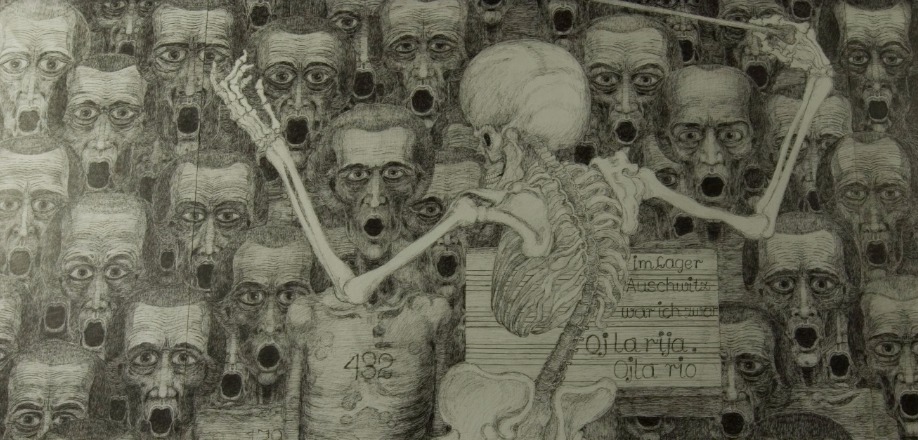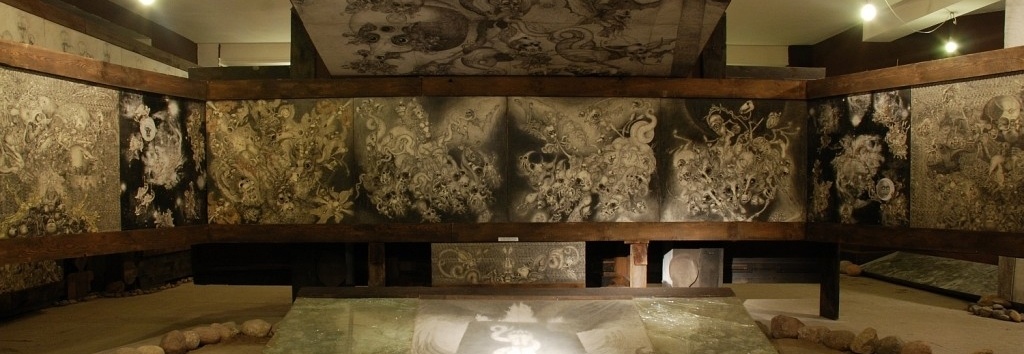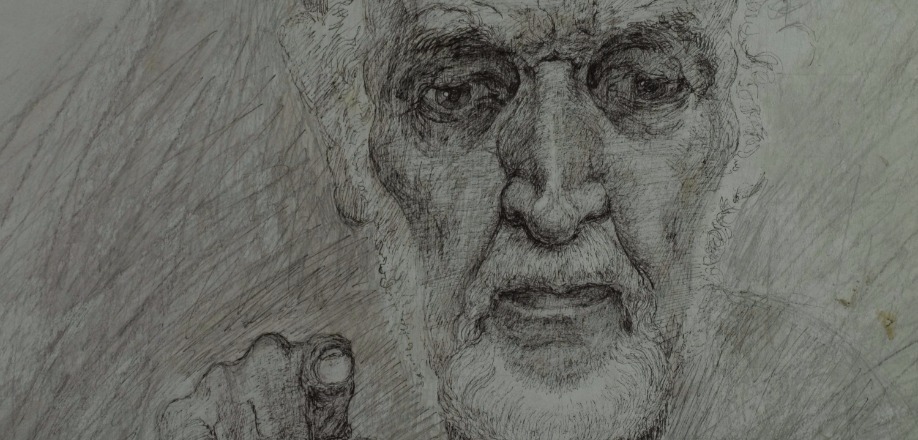Ratowanie wystawy byłego więźnia Auschwitz Mariana Kołodzieja w Harmężach / Help to save a unique exhibition by former Auschwitz prisoner Marian Kołodziej in Harmęże
Ratowanie wystawy byłego więźnia Auschwitz Mariana Kołodzieja w Harmężach / Help to save a unique exhibition by former Auschwitz prisoner Marian Kołodziej in Harmęże
Our users created 1 277 632 fundraisers and raised 1 492 647 102 zł
What will you fundraise for today?
Description
Franciszkanie szukają funduszy na ratowanie wystawy byłego więźnia Auschwitz Mariana Kołodzieja w Centrum św. Maksymiliana w Harmężach. Niszczy ją szkodnik zwany kołatkiem.
„W pierwszej części wystawy +Klisze pamięci. Labirynty+, gdzie znajduje się prowizoryczny wagon kolejowy wykonany ze starych desek przez prof. Kołodzieja, wykryliśmy szkodniki. Żerowisko zrobił sobie w nich kołatek. Owad niszczy ekspozycję. Niestety, dezynsekcja to koszt ok. 20 tys. zł. Nie mamy takiej kwoty. Możemy jedynie mieć nadzieję, że znajdzie się dobroczyńca, który nas wesprze” – powiedział Gwardian ojciec Piotr Cuber.
Duchowny dodał, że ekspozycję zbadali niedawno przedstawiciele firmy, która potrafi wyeliminować szkodniki. „Można je usunąć, stosując specjalny żel. To preparat, który nakłada się na powierzchnię i zostawia do wyschnięcia. Substancja penetruje drewno na sporą głębokość, eliminując szkodniki. Praktycznie, jeśli nie wniesie się ich później z zewnątrz, to już się nie odrodzą” – powiedział ojciec Cuber.
Marian Kołodziej był plastykiem i scenografem. Jako młody człowiek po wybuchu II wojny próbował przedostać się do polskiego wojska we Francji. Został aresztowany przez gestapo. 14 czerwca 1940 r. Niemcy deportowali go do Auschwitz w pierwszym transporcie polskich więźniów. Do 1945 r. był więziony także w Gross-Rosen, Buchenwaldzie, Sachsenhausen i Mauthausen-Gusen.
W ostatnich latach twórczości zaczął poruszać tematykę obozową. W 1992 r. mieszkający w Gdańsku artysta doznał udaru mózgu. Rehabilitacją w chorobie stało się tworzone od tego czasu dzieło życia: "Klisze pamięci. Labirynty". Wystawa składa się z ponad 200 kompozycji rysunkowych oraz elementów dodatkowych, jak prycze, drewniane sylwety, krzyż z desek. Artysta tworzył je 16 lat. Prace przedstawiają wizję gehenny obozowej w niemieckim obozie Auschwitz, a jednocześnie uwypuklają heroiczne zwycięstwo odniesione tam przez polskiego franciszkanina, św. Maksymiliana Kolbego, który oddał życie za współwięźnia Franciszka Gajowniczka.
Prof. Kołodziej przed śmiercią ofiarował dzieło franciszkańskiemu Centrum św. Maksymiliana. Zostało umieszczone w podziemiach tamtejszego kościoła. Artysta zmarł w 2009 r. Jego prochy spoczęły w krypcie w Centrum. Rokrocznie ekspozycję zwiedza kilka tysięcy osób z różnych stron świata.
(źródło: depesza PAP z 20.09.2017 - http://dzieje.pl/kultura-i-sztuka/malopolskie-franciszkanie-szukaja-funduszy-na-ratowanie-wystawy-b-wieznia-auschwitz)

English below:
One of the most unique examples of art made by a former prisoner of Auschwitz Marian Kołodziej (no. 432) needs your help. The exhibition which is also a personal testimony of Marian Kołodziej is presented in a Franciscan Monastery in Harmęże. It urgently needs conservation and protection from bugs. Around 20,000 PLN is needed. See the online version of the exhibition: http://wystawa.powiat.oswiecim.pl/ About Marian Kołodziej: Former prisoner of KL Auschwitz (camp no. 432). Born on 6 December 1921 in Raszków. As a young patriot, he became involved during the course of the war in the activities of the ZWZ, while also preparing to cross the border illegally. On 14 May 1940, he was arrested in Kraków and imprisoned in Montelupich, then later transferred to the prison in Tarnów. On 14 June 1940, he was brought on the first transport to KL Auschwitz. In the camp, he was assigned to various commandos: Abbruchkommando, Kiesgrubekommando, Strassenkommando, Industriehof II-Bauhof. In the Wasserkommando, he became ill and was transferred to the sub-camp of Blechhammer in Świętochłowice, where he made clandestine copies of the plans of the armaments factory for the resistance movement. For this activity, he was sentenced to death, once again transferred to Auschwitz and imprisoned in the bunker of block 11. He survived in the camp until the end of 1944, from where, during the evacuations, he was transferred to Gross Rosen then to Buchenwald. In February 1945, he was deported to Mauthausen, where he was liberated on 6 May 1945. After returning to Poland, he began studying at the Academy of Fine Arts in Kraków in the faculty of painting, from which he graduated in 1950 with a specialisation in scenography. In pursuing his artistic career, he took a job in the “Wybrzeże” theatre in Gdańsk as a set designer. He also collaborated with other theatres in the country and abroad, as well as in the realisation of feature films. In his painting work as a set designer, he never returned to the experience of the camp.

There is no description yet.
Create a tracking link to see what impact your share has on this fundraiser. Find out more.
Create a tracking link to see what impact your share has on this fundraiser. Find out more.






Good work
This is great and important work, keep us in touch with developments, thanks for all those working to save this priceless masterpiece
This is so important, I'm sorry I cannot send more
I met Andzrei at Birkenau and at the exhibition in 2006. His memories are deeply engraved in me.
Thanks to all who preserve the memory of Marian!